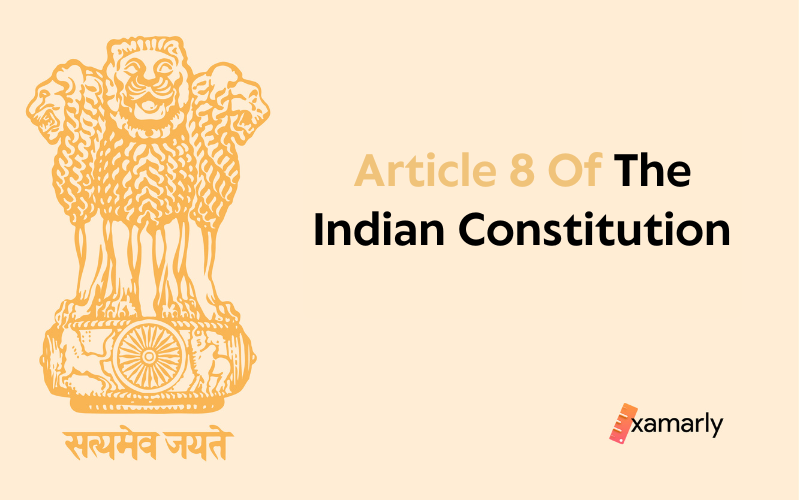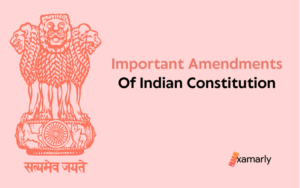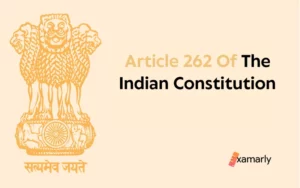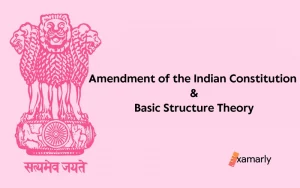An Overview
As per Article 8 of the Indian Constitution, a person who was born in India as defined by the Government of India Act, 1935 (as originally enacted), or whose parents or grandparents were born in India as defined by that Act, and who is ordinarily residing in any country outside India as defined by that Act, shall be deemed to be a citizen of India, notwithstanding anything in Article 5 to the contrary.
Indian citizenship is governed by Articles 5–11 of Part II of the Indian Constitution. Read this article further to learn more about article 8 of the Indian constitution.
What Is Article 8 Of The Indian Constitution?
According to Article 8, anyone who was born in India, as defined by the Government of India Act of 1955, or whose parents or grandparents were born in India, but who is normally residing in any country outside India, shall be deemed to be a citizen of India if they have been registered as an Indian Citizen by the diplomatic or consular representative of India in that country on an application made by them in the specified format to a such diplomatic and consular representative.
A person living outside India who meets any of the two requirements mentioned below-
- He, either of his parents or any of his grandparents must have been born in an undivided India.
- He must have been officially recognized as an Indian citizen by the Indian embassy or consulate in the country where he presently resides after filing an application in the format required by the representation.
Citizenship In Indian Constitution
- The term citizenship is the legal status that grants a person full civil and political rights. A citizen is also bound to serve the state.
- The Constitution of India provides for two categories of citizenship. The first is citizenship by birth, by descent. People who were born in undivided India or to Indian parents or grandparents are considered to be Indian citizens. People born outside India are not considered to be Indian citizens unless they have adopted the citizenship of India.
- Citizenship in India is defined in the constitution and Parliamentary legislation. The constitution provides for certain fundamental rights that can only be enjoyed by citizens. These rights include freedom of religion, freedom of speech, and freedom of movement. In addition, the constitution guarantees the freedom of residence and association for citizens.
- A person who has acquired citizenship in another country can renounce it if they wish. The government can revoke citizenship only in certain circumstances. For example, if a person acquires citizenship in another country through fraudulent means, they can lose it. Similarly, if a person has acquired citizenship in another country but is still an Indian citizen, he or she can regain it within a year.
- Indian Citizenship can be obtained through naturalization if the person has been living in India for ten years. A person can also become a citizen by naturalization if they have been married or are at least of legal age. However, this rule does not apply to people who have acquired citizenship in another country during the war.
Who Was Considered Indian Citizens When The Constitution Was Promulgated?
When the constitution takes effect, four groups of people are regarded as being eligible to become Indian citizens. These groups are listed between Articles 5 and 8 of the constitution.
- 1. Article 5 – Citizenship by residence: A natural citizen of India for at least five years before the start of the constitution must be an Indian-born person. Also, if a parent of that person was born in India, or that person themselves, then he/she would be considered an Indian Citizen. A person’s place is where they have their own home or where they have a legal right to live permanently.
- Article 6 – Nationality of migrants to India from Pakistan: If a person crossed the border before July 19, 1948, if that person immigrated on or after July 19, 1948, and if that person is registered as an Indian citizen after having lived in India for at least six months prior to the date of application for registration, the Indian government will treat that person as an Indian citizen.
- Pakistani Immigrant Citizenship (Article 7): Citizen of Indian territory has the right to become an Indian citizen under some circumstances.
- It is if they migrate to Pakistan after March 1, 1947, but then return to India using an Indian residency permit.
- Someone has been registered as a citizen of India and has lived there for at least six months prior to the date of the registration application. Then it will be a representative chosen by the Indian government.
- 4. Indigenous Indians living outside India (Article 8): It is about Indian citizens who reside abroad, including parents of any Indian-born grandparents as defined by the Indian Government Act of 1935. They will be granted citizenship as if they had registered with Indian embassies or consulates in the nation in which they reside.
The following related articles tabulated below will help you in your UPSC Exam Preparation.
Provisions Under The National Act 1955
According to the legislation, you can become an Indian citizen in the following ways:
- Citizenship by birth: A person is regarded as such if they were born in India on or after January 1, 1950. Also, if they have a valid passport or other travel credentials, but stayed in the nation for a long time, they will be considered so.
- Citizenship by descent: The person will be regarded as an Indian citizen if either of the parents born outside India is an Indian citizen at the time of the person’s birth and the birth is registered within a year following the event or the Act’s beginning, whatever comes first.
- Citizenship by registration: A person is registered as an Indian citizen if they have married an Indian citizen. Such a case can also apply when a person has been an Indian citizen for five years prior to applying for registration.
- Citizenship by authorization: A person can be issued a citizenship certificate if they have lived in India for 12 months before asking for a certificate. The person shall not be an illegal immigrant.
Persons of Indian Origin (PIO) Card
- The PIO card is available to people of Indian descent who are citizens of any nation other than Pakistan, Afghanistan, Bangladesh, Bhutan, Nepal, Sri Lanka, or China.
- If a person is married to an Indian citizen or someone of Indian origin, or if they have formerly held an Indian passport, they may be eligible for a PIO card.
PIO card holders get fifteen years of repeated entrance privileges into India. They don’t require a different visa.
Government of India Act 1935
One of our constitution’s longest documents was the 1935 adaption of the Indian Government Act, which was based on British law. It had 321 pieces divided into 10 schedules. Here are a few of its characteristics:
- It resulted in the Indian Government’s federal structure being established.
- Between the center and the states or provinces, it divided the powers.
- Some powers only belong to the center, while others only belong to the states. But there were some powers that belonged to both the federal government and the states.
- There were 36 of these.
- Independent authorities were eliminated as a result in the states. The center had governing authority over the provinces even though they had the ability to operate independently inside the territories they had taken over.
- In the states, the Governor acted as the supreme authority. This persisted in 1937 before being eliminated in 1939.
- The states rejected the diarchy that was offered because they would not submit to the central government.
- It also introduced the idea of a state having two chambers. The Lower house was referred to as such, and the Upper house as such. The houses, however, were subject to a number of limitations.
- These houses were involved in the states of Madras, Bombay, Bengal, among others.
- There was a characteristic of community members being represented. It indicated that the scheduled castes, laborers, and women would each have their own electorate.
- A group of consultants was to choose the secretary of the state of India.
- Additionally, voting was included; roughly 10% of the populace of the nation was eligible to vote.
- Additionally, it provided a capability for managing the country’s currency flow. For the same, a reserve bank was to be set up.
- The federal court was founded as a result of the Act of 1935, which took effect in 1937.
- Additionally, it intended to create independent public commissions both at the federal and state levels.
- Up until the establishment of the Supreme Court, the federal court established by this Act served as the operating court. It had a judge and a maximum of eight more judges.
- The Act also suggested railroads and granted federal railroads with its authority. Federal Railways was governed by the Governor General of India and was not subject to any other authorities.
It was a turning point and cleared the path for India to have a responsible government. The British gave India this constitution as their final gift before the nation gained independence in 1947. It was fantastic for women since they were given their own electorate and therefore a significant voice in the decision-making process. It prepared the path for India’s Independence and the subsequent creation of the constitution.
Conclusion
Human growth depends on the realization of fundamental human rights. These essential rights, including DPSPs and Fundamental Rights, are safeguarded by the Constitution. The emphasis is on fundamental rights. They are directly enforceable in a court of law. It is clear from a thorough examination of Parts III and IV of the Indian Constitution that these two sections incorporate practically all of the rights enumerated in the Universal Declaration of Human Rights.
The judiciary has also taken significant actions, such as loosening the requirements for “locus standi,” so that anybody can now approach the court rather than only the parties involved. Following the Supreme Court’s interpretation of the Citizen’s Fundamental Rights, rights like the right to privacy, the right to a healthy environment, the right to unrestricted access to counsel, the right to a fair trial, etc., now have a place in the Citizen’s Fundamental Rights.
FAQs
Article 8 Is Found In Which Part Of The Indian Constitution?
Article 8 of the Indian Constitution is covered under Part II of the Indian Constitution which addresses the citizenship for people residing outside of India but of Indian origin.
Which Articles Of The Indian Constitution Address Citizenship In India?
Citizenship rights are covered under articles 5 to 11 of the constitution of India.
Why The Citizenship Is Important?
Being a citizen confers a number of advantages and rights, including voting rights, the ability to participate in elections, hold elected office, and possess property, among others. Thus the concept of citizenship is important.
Which Parliamentary Act Lays Forth The Procedures For Acquiring Indian Citizenship?
The citizenship act of 1955 outlines the procedure to earn citizenship by law.






